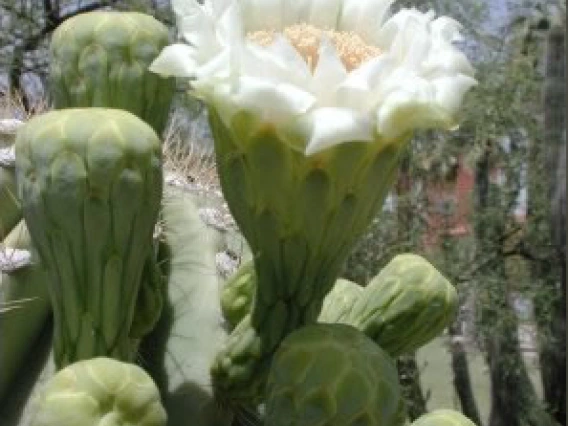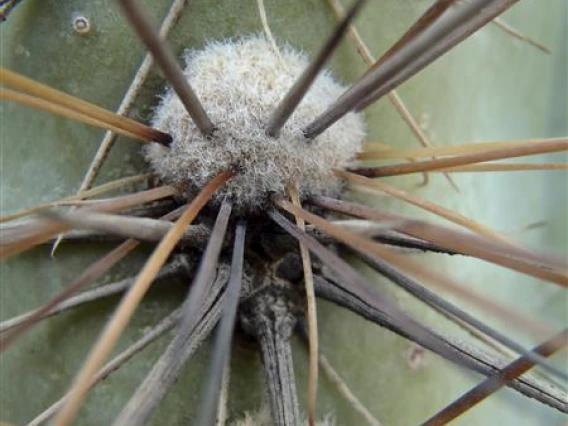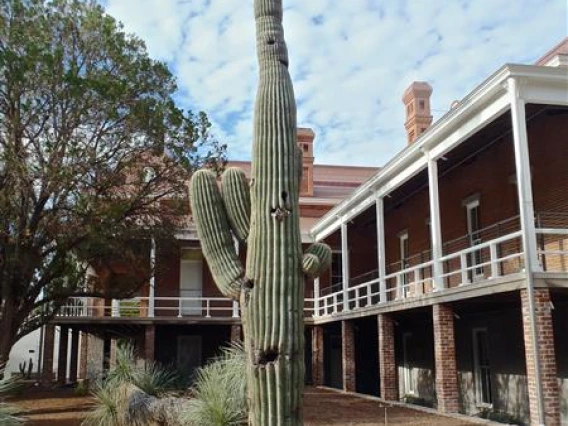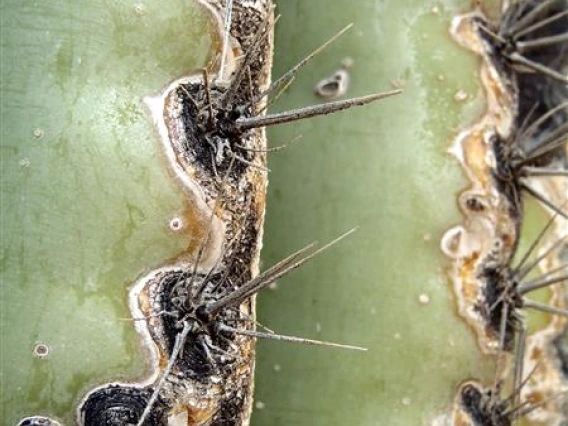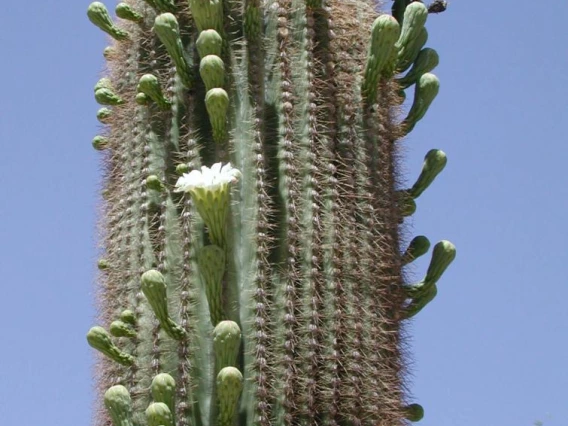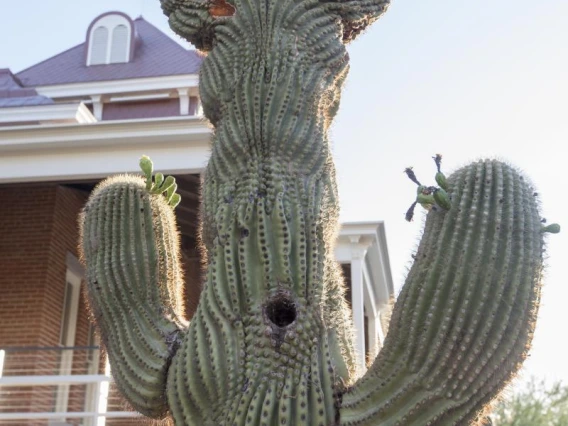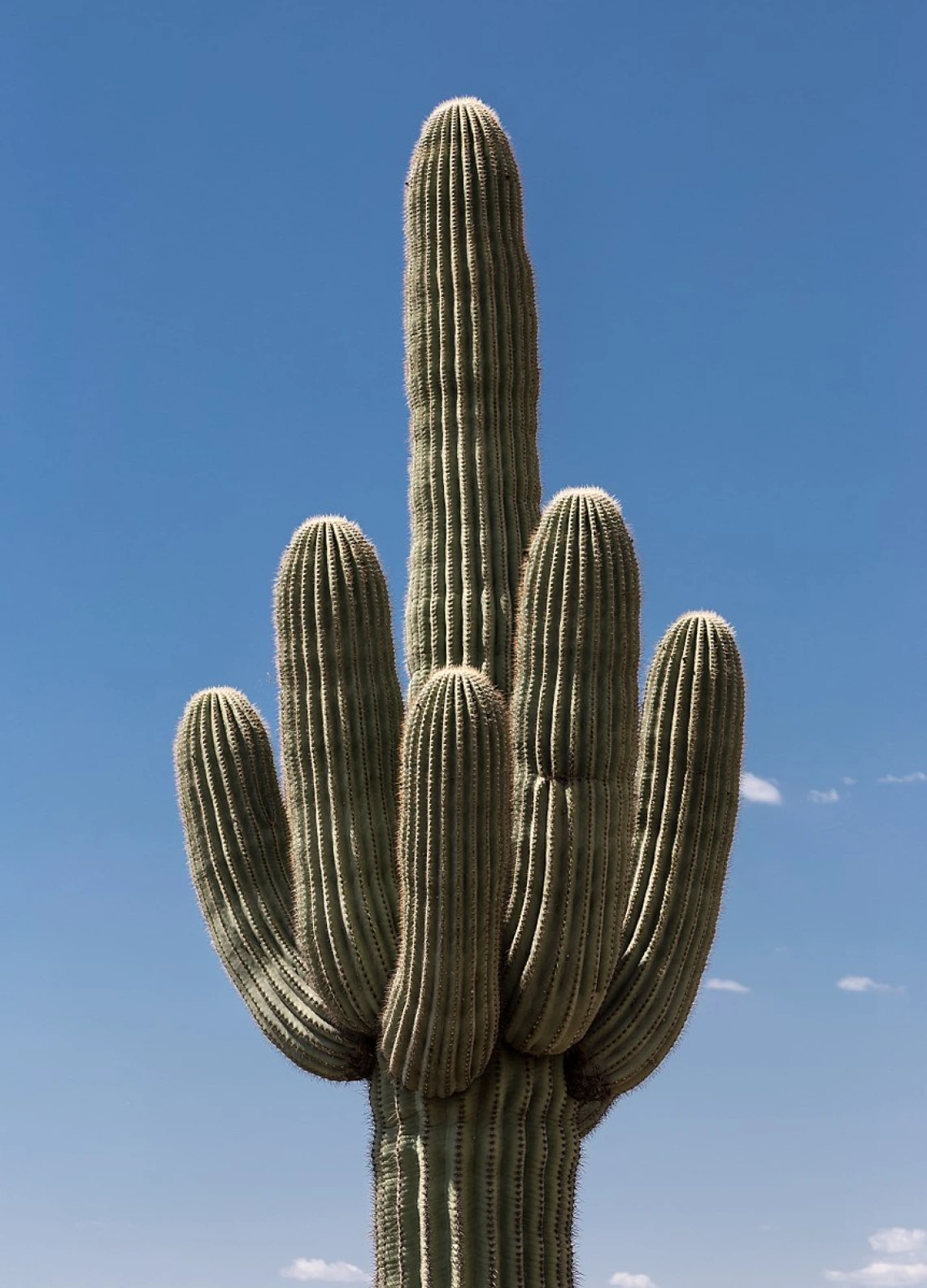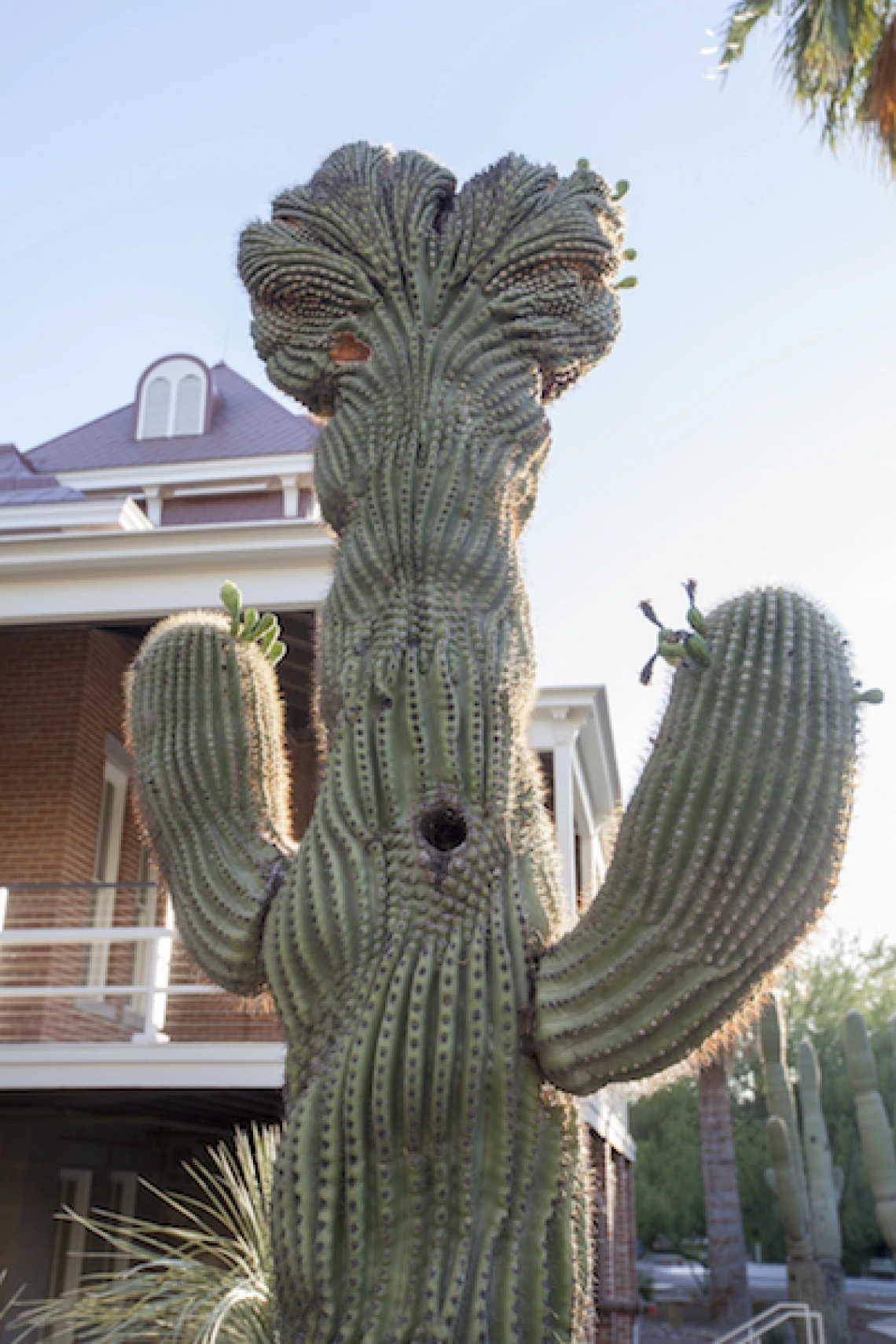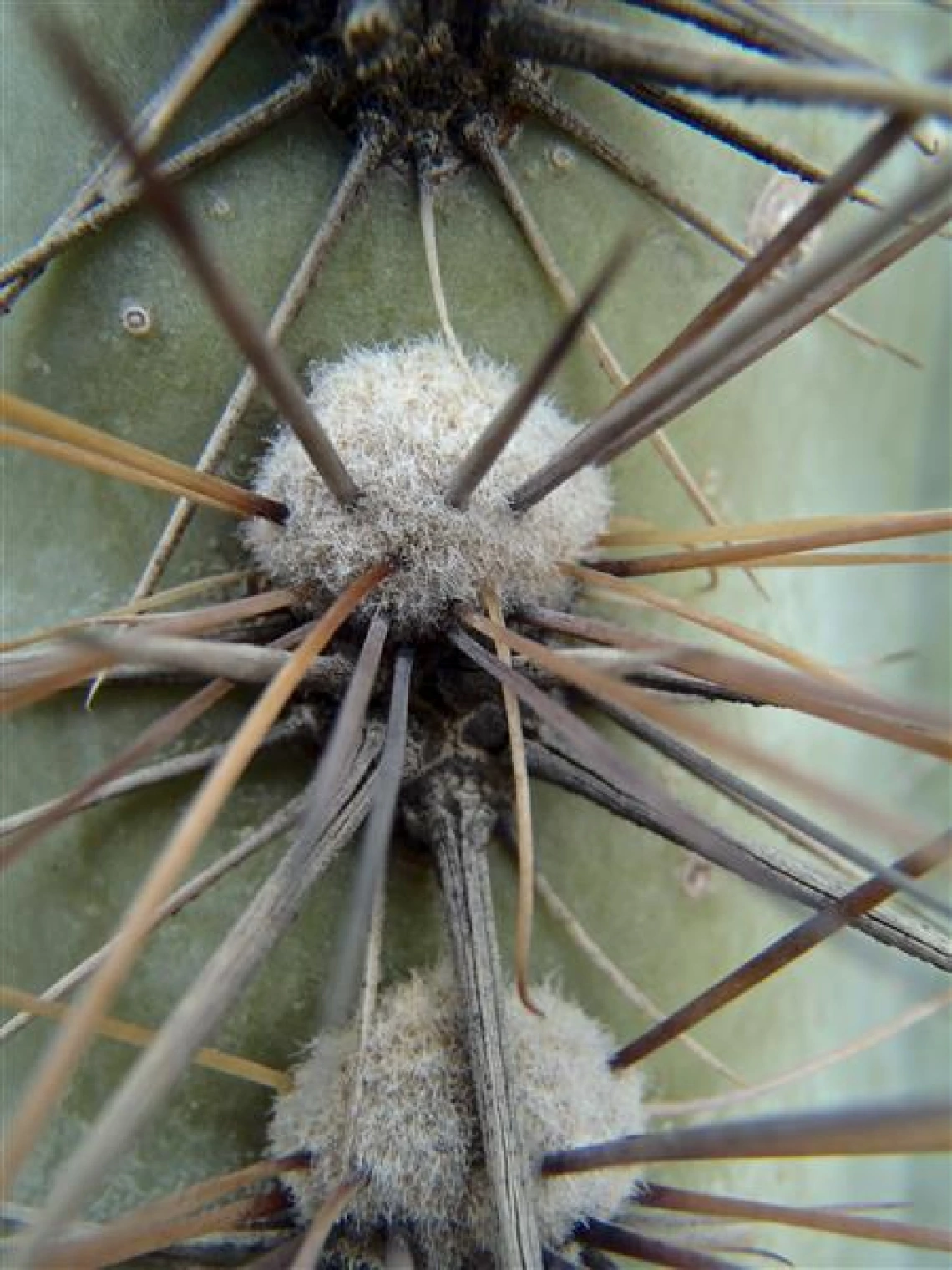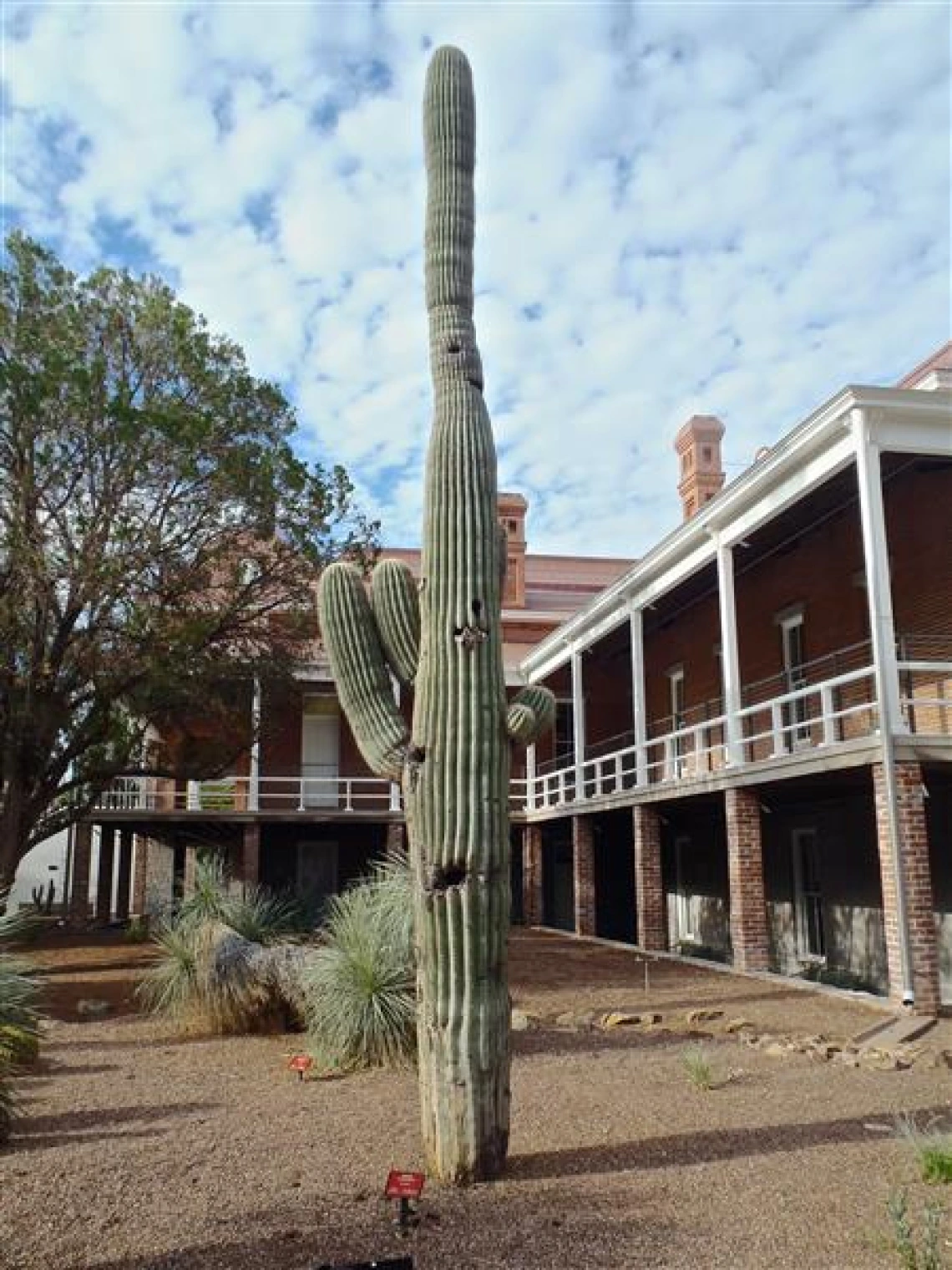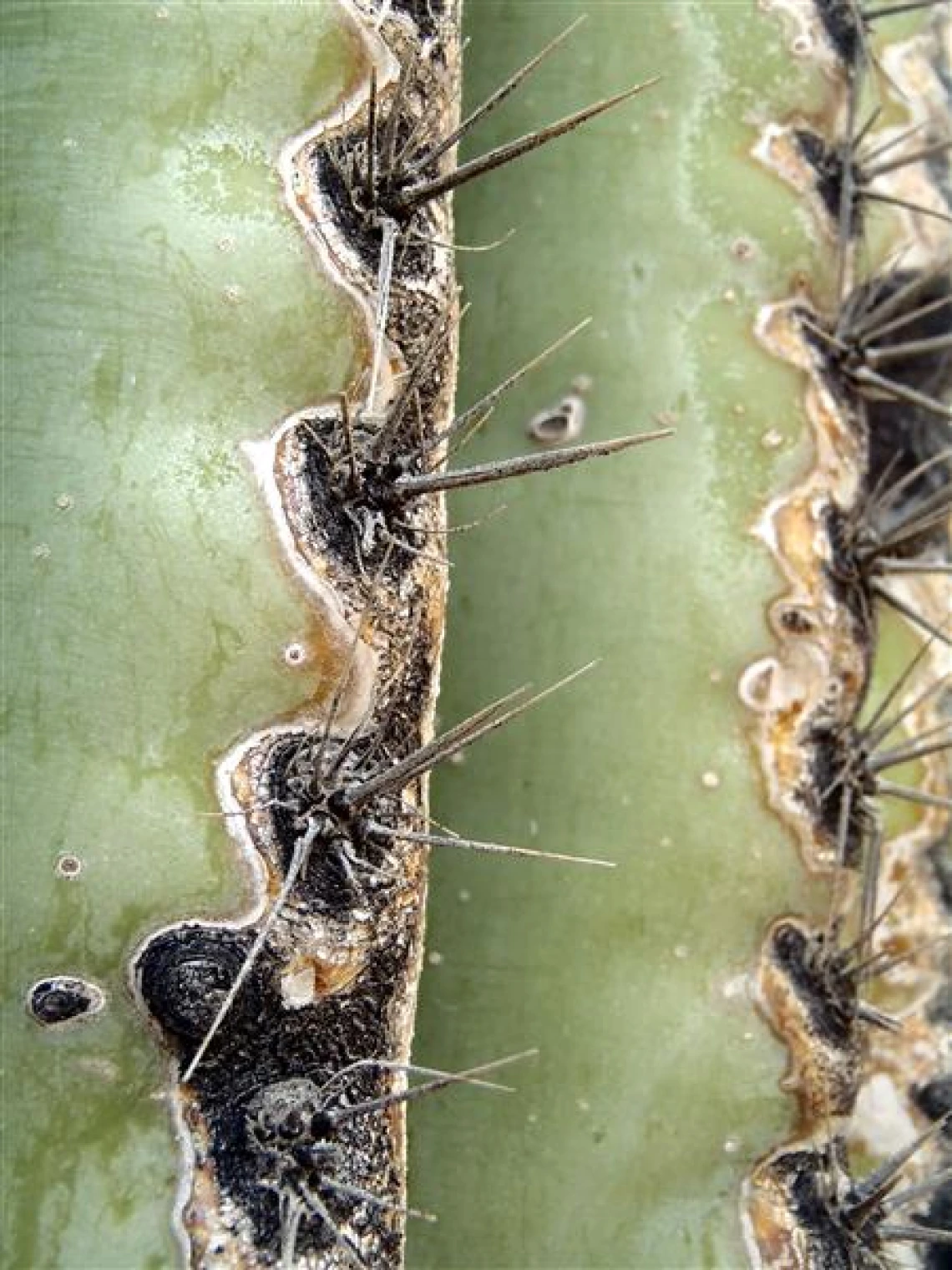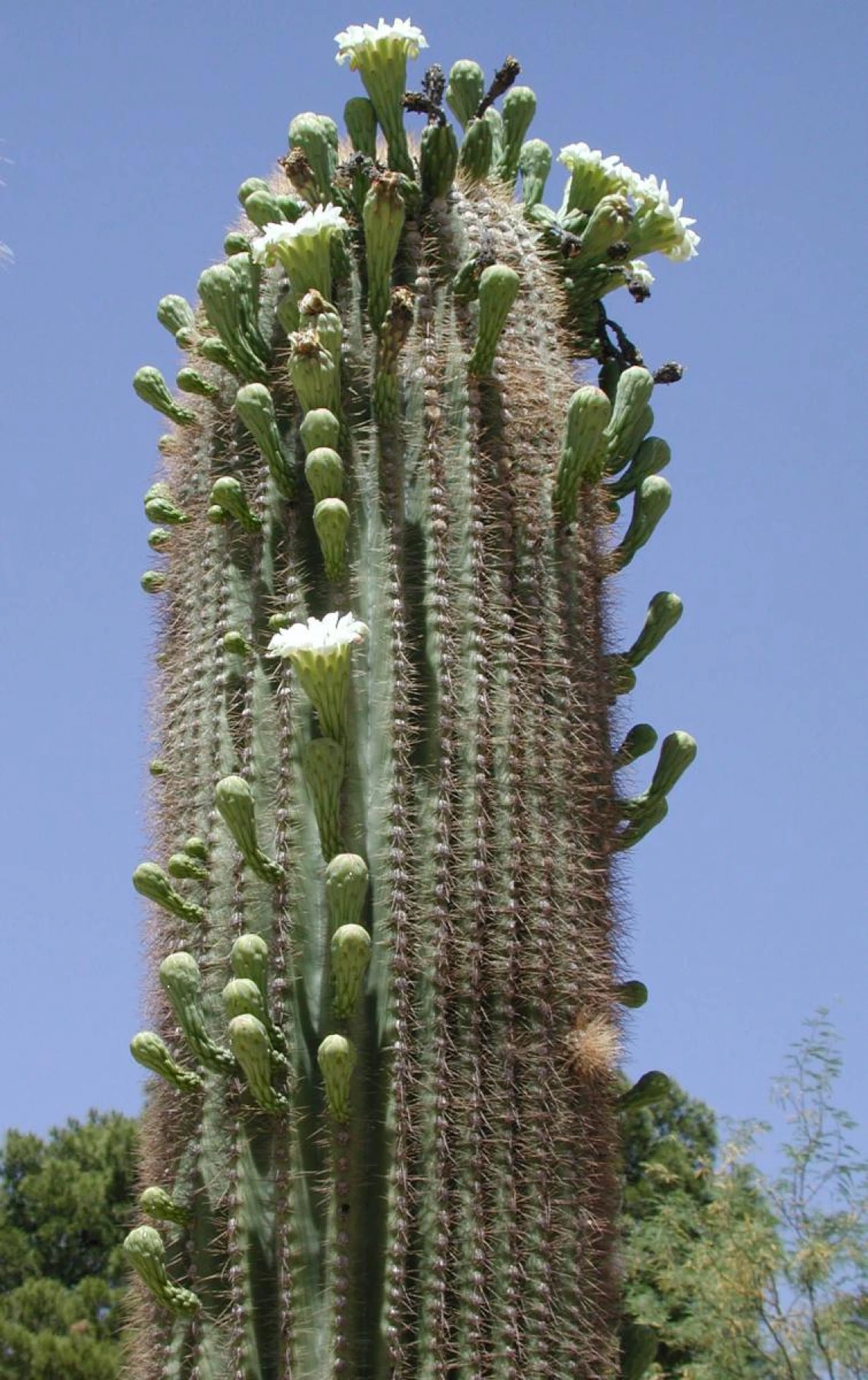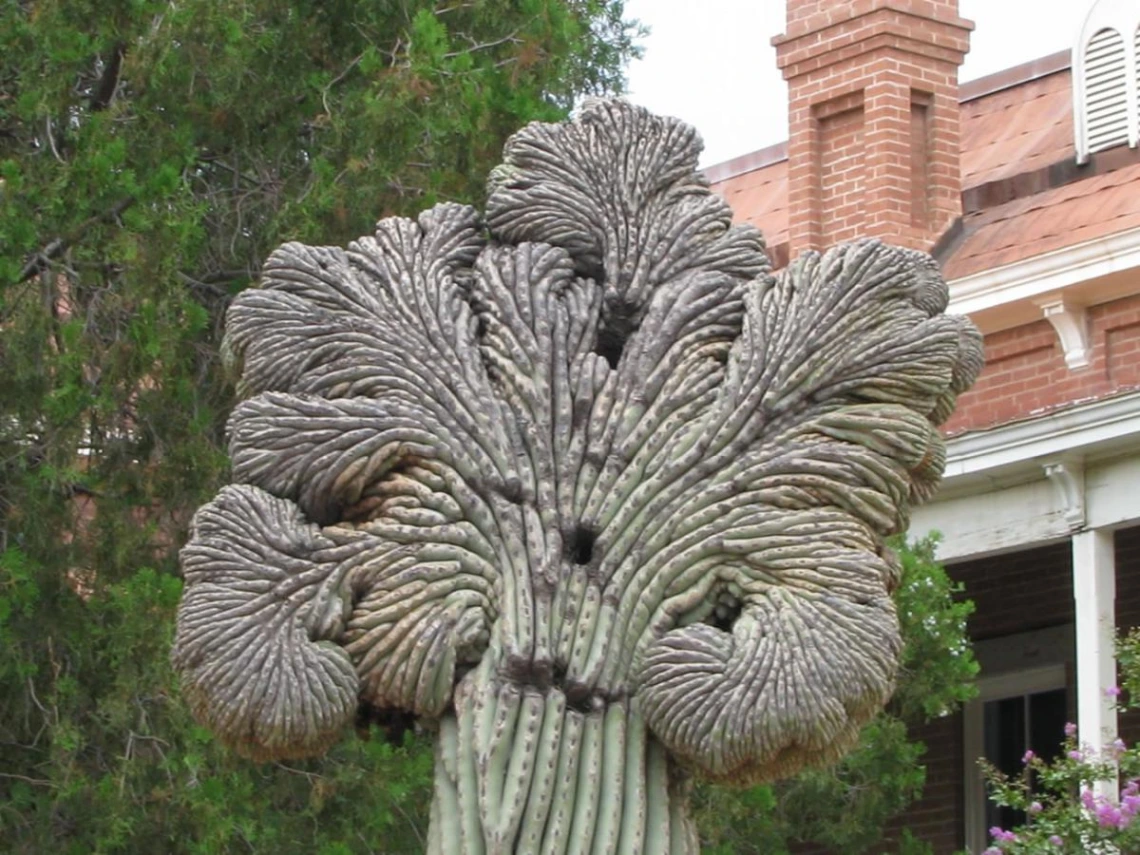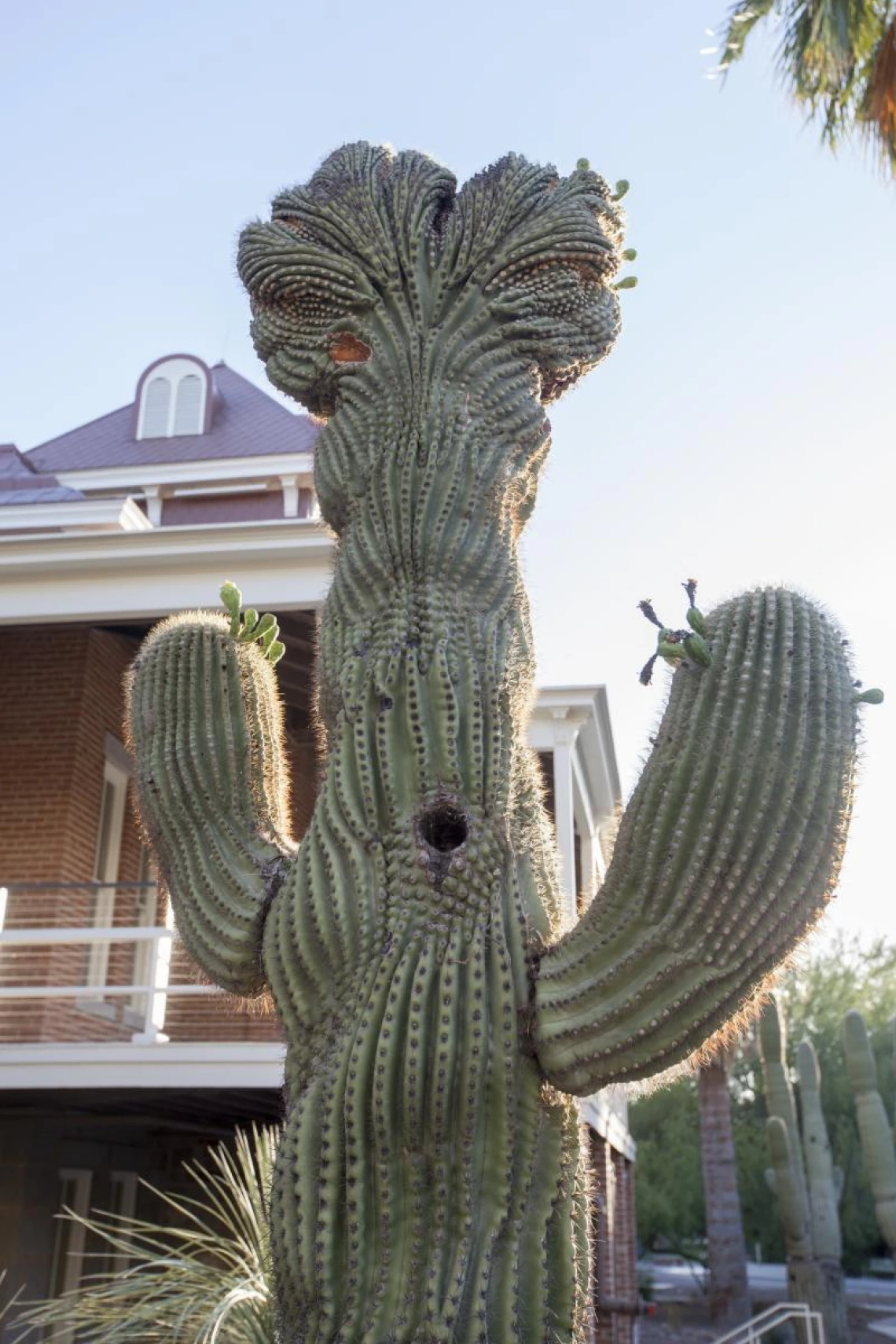Sonoran Native Plants Virtual Tour
Carnegia gigantea | Cactaceae | saguaro
Desert Ecology:
Saguaro is an iconic symbol of the Sonoran desert. Saguaro are bat, bird and bee-pollinated and the large red fruits are consumed by birds, especially doves, who disperse seeds. Saguaro generally grow very slowly, but are long-lived. Seeds germinating in protected locations beneath “nurse trees” establish best. Ultimately, however, saguaro outlive the nurse plants and may overtake the tree roots by intercepting rainfall. Saguaro begin to flower between 40 and 75 years of age, and grow arms between 50 and 100 years . The plant provides shelter for nesting birds, especially woodpeckers, Elf Owls and often other birds occupy abandoned nests.
Ethnobotany:
Seri use “saguaro boots” (abandoned, fallen remains of callused woodpecker nests) to carry and store food. Fruits, which ripen in summer during period of food scarcity preceding monsoons, were used as a food source by Pima, O’odham, and Yavapai Saguaro has special Tohono O’odham significance as their calendar begins and ends based on fruiting time (“Saguaro Harvest Moon”, right after the “Painful Moon”), and Saguaro wine was served ceremonially to celebrate the upcoming monsoons. Others ritually discarded the outer fruit wall onto the ground facing upward, to encourage rain. Ribs were not only used for harvesting fruit but also as a building material.





